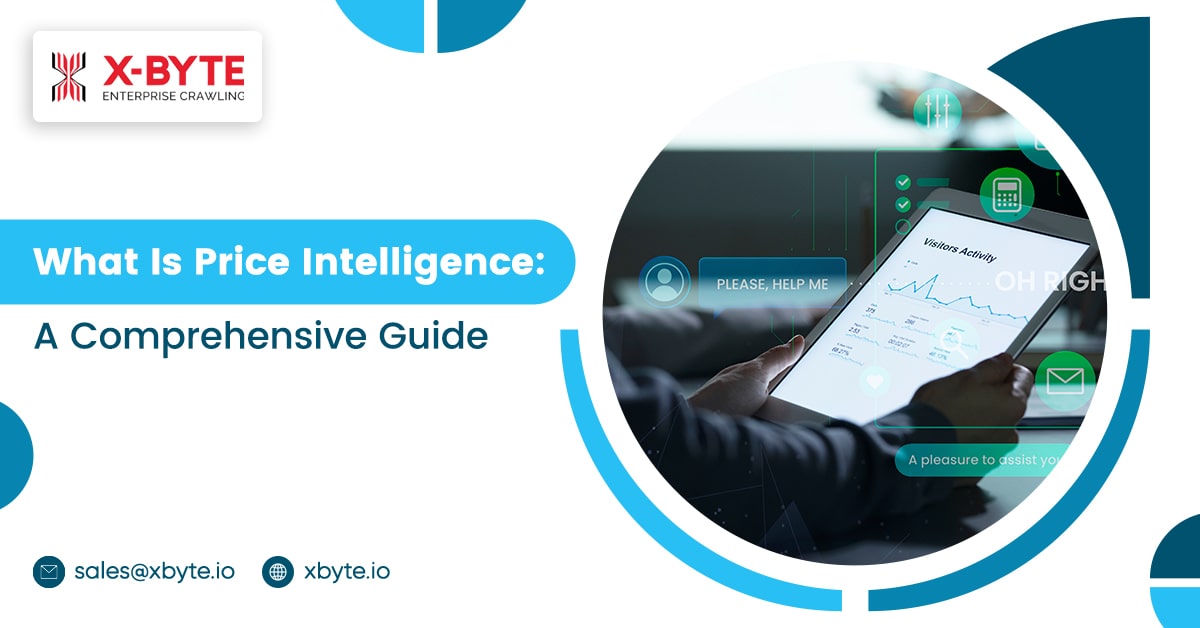
The world we live in is changing. It is a transitional period for retail brands and companies. How can you master this transformation? Price Intelligence can help you with it. The retail industry is in a whirlwind. Technology, digitalization, and shifting consumer behavior are reshape the industry and business.
However, every purposeful product available comes at a price. Price determines everything – your brand name, product type, characteristics created, market share in the targeted segment or demographic group, and more related to your product’s price or service.
It becomes easier to set a price model if you know your competitors’ pricing strategy. And in this, price intelligence can be your great asset. So, the question is, what is price intelligence?
This comprehensive guide will teach you about price intelligence, why it matters today, and its benefits. So, let’s get started.
What Is Price Intelligence?
It is the process of collecting, analyzing, and interpreting data to gain insights into market trends. It includes identifying key drivers of price movements and forecasting future market conditions.
Price intelligence helps companies make more informed decisions about how they should react to changes in the market, such as changes in supply or demand.
For example, if a company notices its competitors are lowering their prices for a particular product, it may be time for them to follow suit. But if the company needs accurate price intelligence, it may only realize there is an opportunity once it is too late.
Why Does Price Intelligence Matter Today?
Every business is facing the challenge of pricing. With several competitors and hundreds of products, it is hard to set the price of a product. The wrong pricing strategy can lead to the failure of a business. Thus, it is essential to understand the value proposition and its importance in setting prices for your products or services.
Price intelligence can help you understand how competitors price their products and services. This information can be used to modify your product pricing strategy to increase sales and market share.
Here are some reasons why price intelligence matters today:
- Getting insights into competitor pricing
- Being able to identify your ideal customer segment
- Understanding how market dynamics affect price decisions
- Knowing how much money is spent on advertising by competitors
7 Benefits of Price Intelligence for Your Business

It is a tool used to help your business understand the market and competitors. It can help you make better decisions about pricing, as well as product and service offerings.
Here are seven benefits of price intelligence for your business:
1. It Helps You Understand The Competition
Price intelligence helps you understand the competition. It can give you insights into how much your competitors charge for a particular product or service, which can help you make more informed decisions on pricing.
For example, if all of your competitors are selling the same product for $100, but one is selling it for $50, then $100 may be too high for your business model. In this case, consider lowering your price to match or beat theirs.
2. It Allows You To Monitor Prices Over Time
One of the best benefits of price intelligence is that it allows you to monitor prices over time to adjust them whenever necessary. One of your biggest competitors might have lowered its price because they have had problems with inventory turnover or sales volume lately- maybe this is an opportunity for you as well.
3. It Helps You Understand What Customers Value Most
Competitive price intelligence gives you deep insights into customers’ behavior and preferences. You can use this knowledge to create new products and services that meet their needs. It also helps you determine which product features or services are most important to your customers so that you can improve these aspects in future goods.
4. Help You Set The Right Price for Your Product & Services
Competitive price intelligence helps you optimize your pricing strategy to drive higher profits. It enables you to understand how your competitors price their products and services, what factors influence their prices, and how customers perceive different prices. This information can help you decide whether to change your prices and, if so, what changes are needed to stay competitive.
5. Enable More Accurate Forecasting And Planning
Price intelligence lets you see the most recent prices paid by your competitors, which helps you make better pricing decisions. This will help you avoid underpricing your products, which can lead to losing customers due to a lack of competitive pricing. Conversely, it will help you avoid overpricing your products, which can result in lost sales if your competitors don’t follow suit.
6. Identify Trends And Patterns In The Market
By seeing the prices that other companies are charging for similar products, it’s easier to spot trends and patterns in the market. For example, if there’s a new competitor on the scene charging significantly lower prices than everyone else, this will be reflected in their price history. Consider lowering your price slightly to remain competitive with them or risk losing out on sales altogether.
7. Enable Better Inventory Management
Price intelligence allows you to handle your inventory better. Whether running a retail store or an online shop, you can use this data to ensure you stay well-stocked on all items.
If you know exactly how many units of each product are left in stock, you can make smarter decisions about how much to order from the supplier and when to reorder. This reduces the risk of having too much of one product while running out of another.
It also helps you avoid situations where you have too much inventory and need to sell it off at a discount — which is better for your bottom line than having it sit around gathering dust.
How Can Brands And Retailers Implement Price Intelligence?
Competitive price intelligence is a way to help retailers and brands get a better understanding of the competition. It is essentially a way to track competitors’ pricing data, which can then be used to make informed decisions about your prices.
Here are some ways that retailers and brands can use price intelligence:
- Use it as an internal tool. You can use price intelligence to track your prices, monitor competitors’ prices, and identify opportunities for price optimization.
- Use it as an external tool. Use it to identify pricing trends across your industry — this can help you determine whether or not it’s time for you to raise or lower your prices.
- Compare it with other data sources like product reviews or content ratings. This will help you understand how customers perceive your pricing relative to competitors.
- Identify gaps in the marketplace where there may be an opportunity for new products or services to fill those gaps with higher margins than existing offerings.
- Forecasting future demand for specific SKUs based on price elasticity, seasonality, and trends in other areas of business (e.g., new product launches).
- Know how much profit you make on each item sold, so you can decide which items to discount, promote or keep at the total price.
Wrapping Up
In the end, we encourage you to look at Price Intelligence in a different light. So often, it’s seen as a time-consuming hassle for designers. Still, these analytics can be incredibly valuable for understanding your clients, increasing revenue, and working with your customers more efficiently. Overall, Price Intelligence helps you grow your business and learn more about your customers—and that is certainly worth the time investment.
